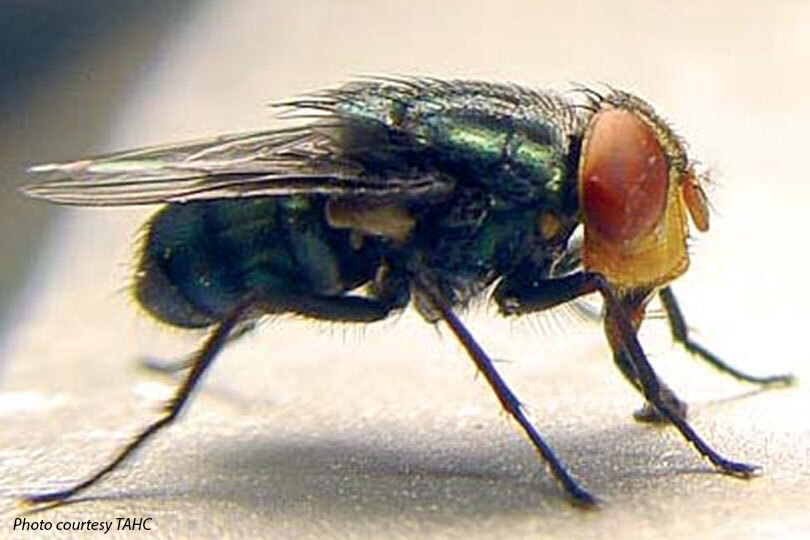By Emmy Powell
Communications Specialist
Texas A&M AgriLife Research and the Office of Radiological Security (ORS), part of the National Nuclear Security Administration (NNSA), are teaming up to combat the New World screwworm (NWS) using electron beam (eBeam) technology.
Traditionally, screwworm control has relied on cobalt-60 gamma sterilization, which uses high-radioactivity materials. However, the partnership aims to explore eBeam as a safer, non-radioactive alternative.
“This collaboration demonstrates how research and innovation can drive solutions to protect human and animal health,” said Dr. Phillip Kaufman, head of the Texas A&M Department of Entomology. “We must continue advancing critical science so we are prepared not only for the New World screwworm but for other invasive arthropods that will challenge us in the future.”
The project will focus on developing sterile flies in the U.S. to prevent screwworm reproduction, protecting agriculture and strengthening national security.
“This collaboration with NNSA enables Texas A&M AgriLife to contribute innovative agriculture research that is essential to our nation’s food security,” said Dr. Suresh Pillai, director of the National Center for Electron Beam Research at Texas A&M University. “We are proud to support their mission to enhance the security of the United States.”
The initiative targets NWS and also lays the groundwork for managing other invasive arthropods. It will expand cooperation among universities to improve radiological security practices nationwide, as well.
Texas A&M researchers confirmed that eBeam can successfully sterilize male screwworms (Cochliomyia hominivorax) without relying on radioactive materials.
“Our mission-driven partnership with Texas A&M is essential to advancing American innovation in eBeam applications and enhancing our national security,” Kristin Hirsch, director of ORS, said. “With the support of Texas A&M AgriLife experts, NNSA is able to help combat the spread of the NWS, building stronger food systems and safer communities across the country.”
On Sept. 21, a NWS case was reported 70 miles from the U.S.-Mexico border, which is a crucial area in preventing the pest’s spread.
New World screwworm, a flesh-eating parasite that attacks warm-blooded animals and can be fatal if untreated, poses a significant danger to U.S. livestock and wildlife.
Learn more about New World screwworm at screwwormtx.org.


Leave A Comment